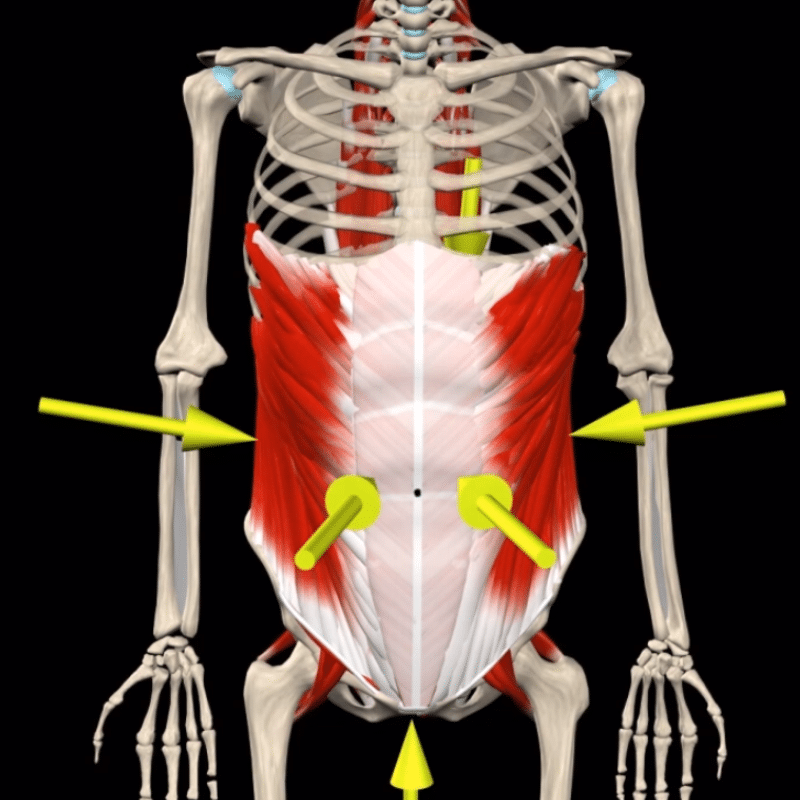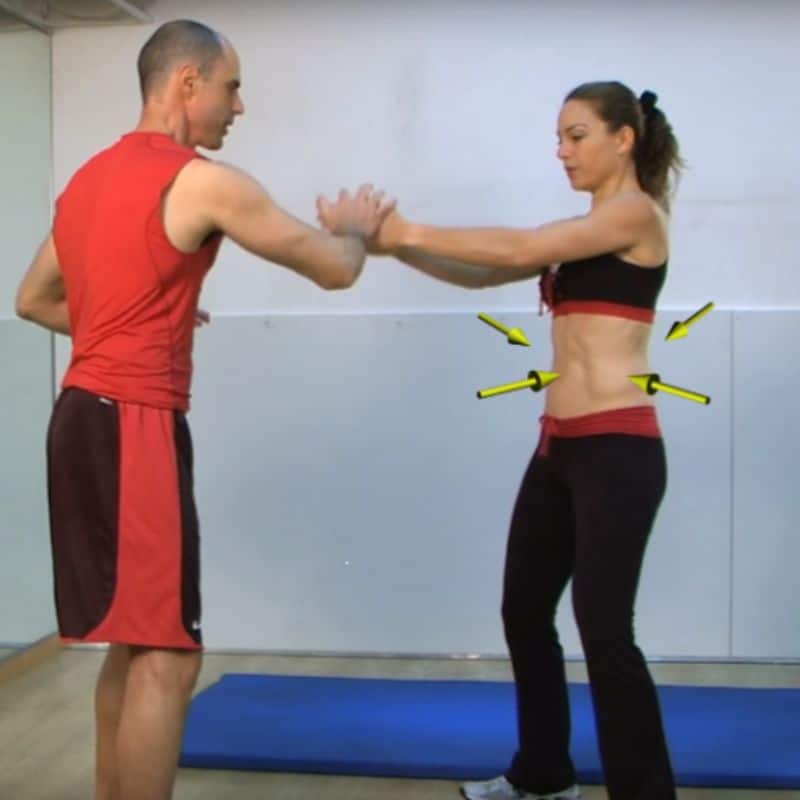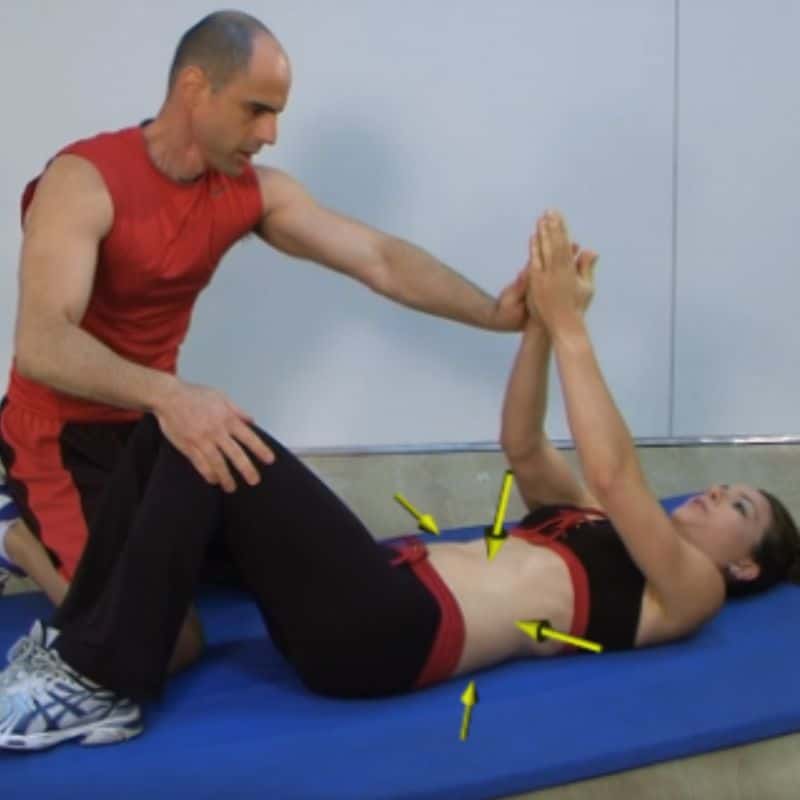Learn all about Abdominal Bracing – the small nuance that makes a big difference!
So, what is Abdominal Bracing?
One way to start understanding Abdominal Bracing is to imagine how you would brace your torso and core if someone was coming at you to hit you in the stomach. You can see in the video that bracing is a technique for stabilizing the spine and torso.
In Abdominal Bracing, we tighten all the muscles surrounding the abdomen.
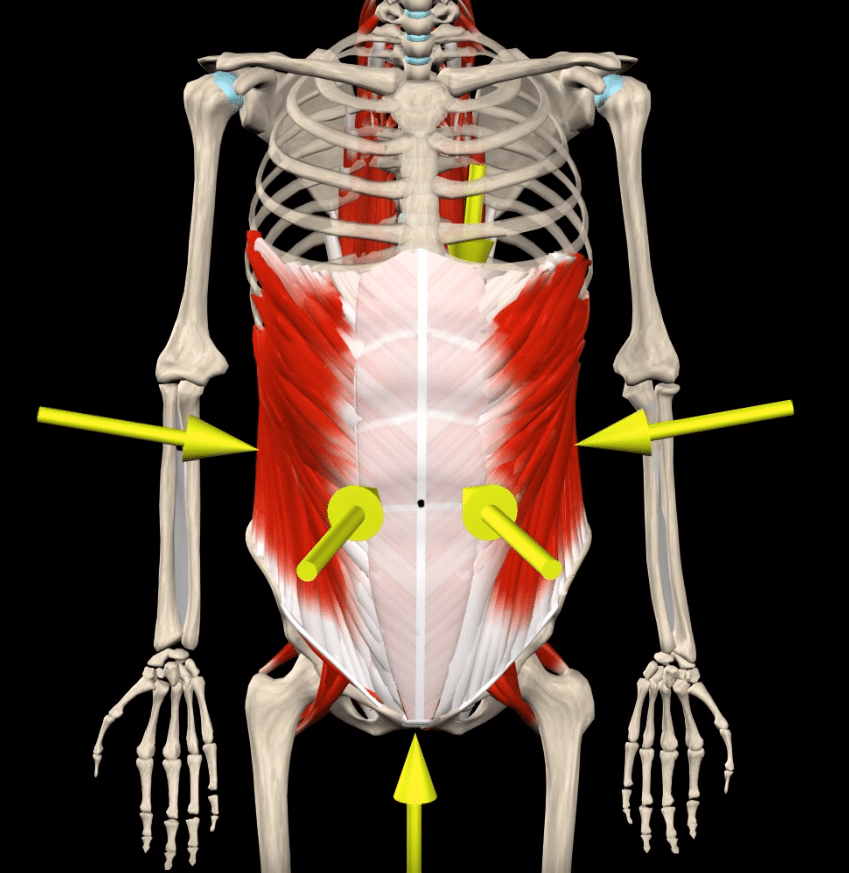
As we contract the abdominal muscles, the erector spinae muscles immediately go into joint action and support the back from the rear. In other words, we create a natural belt or girdle that stabilizes and protects the spine with muscle co-contraction. Co-contraction is when multiple muscle groups work together and simultaneously contract to hold a stable position.
The main muscles co-contracting in this movement are the transversus abdominis, the pelvic floor muscles, and the multifidus muscle. When we want to maintain maximal posture, we inhale, which causes the diaphragm to descend and increases the rigidity of the torso. Regarding timing, bracing will always precede the distal movement (movement with the weight) by a few hundredths of a second.
Why train in Abdominal Bracing?
Abdominal Bracing is different from other training exercises in that it can be very slight and nuanced. Sometimes, it can take time and practice before the trainee will even be sure they are doing it at all. However, don’t let this fool you into thinking that it’s not important. Understanding and mastering this technique will improve all your other strength-training exercises in a big way. It’s not the flashiest move, but it will make all your other moves much more precise and effective.
Abdominal Bracing will strengthen your core, protect your back from injury, and give you more power.
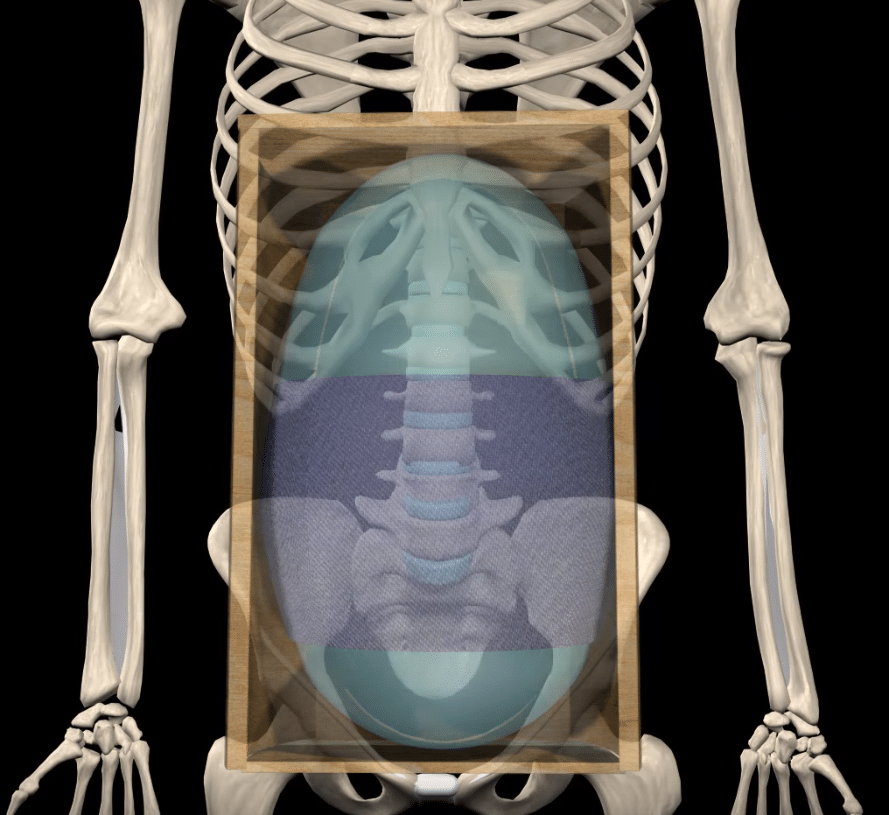
How to practice Abdominal Bracing (in pairs)
Here are two variations you can try today:
- Bracing drills while standing: The trainee holds his or her arms together straight out in front of their body, while the instructor stands opposite them and pushes their hands to the sides. The trainee’s aim is to keep themselves from being toppled over to the side by the instructor. You can see the abdominal belt contracting and stabilizing the back a moment before the push. For further practice, the trainer will add the element of surprise.
- Bracing drills while lying on the back, knees bent: The instructor pushes the trainee’s arms to one side and the legs to the other side at the same time. The trainee resists the push and tries to keep their body in place. In the video, you can see the speedy reaction of the abdominal belt/girdle and how all the muscles work together to maintain STABILITY.
Your strength training workout – upgraded
Once you master Abdominal Bracing, you will be able to incorporate it into all of your training routines. You will execute the same exercises now with a strong and protected core. In all the exercises presented below, the aim is to maintain the stability of the torso and to maintain the spine in a neutral position.
To this end, we will contract all the abdominal muscles without leaving the neutral position and without drawing in the abdomen. In this way, we will learn how to create a natural belt/girdle.
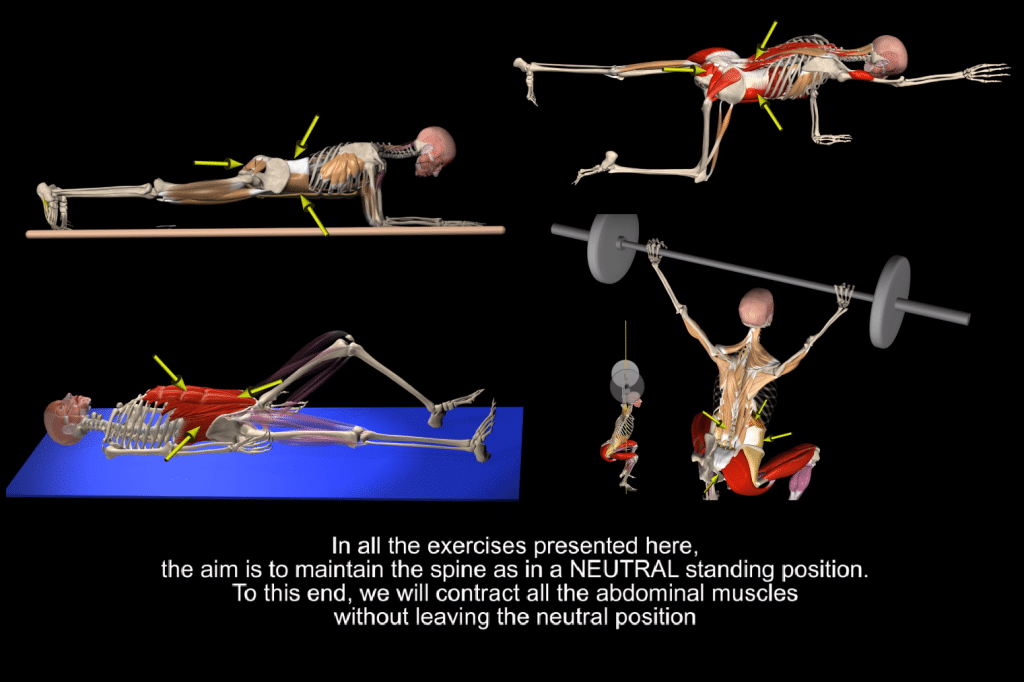
_________________________________________________________________________________________________________________
To learn about more nuances that will make a big difference in your strength training session, check out the Muscle&Motion Strength Training App today!


